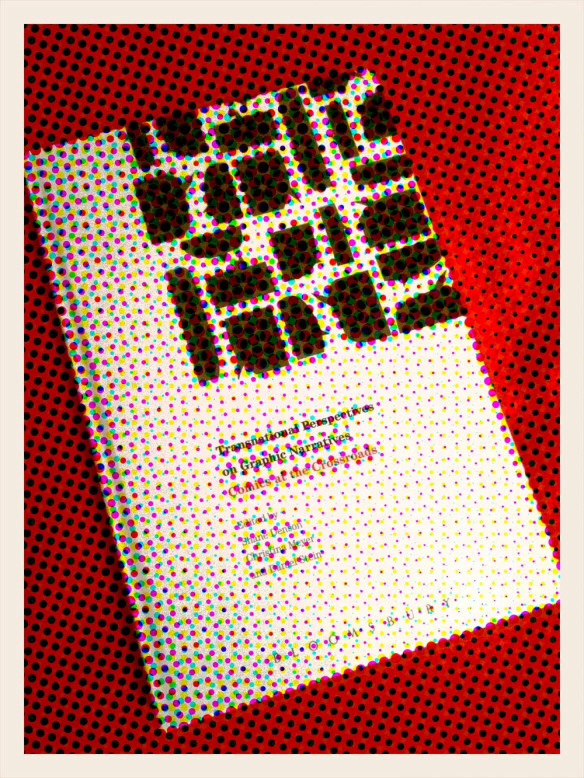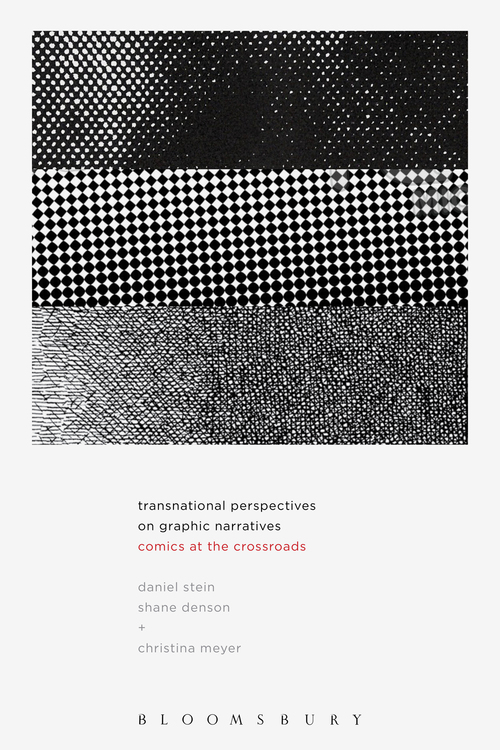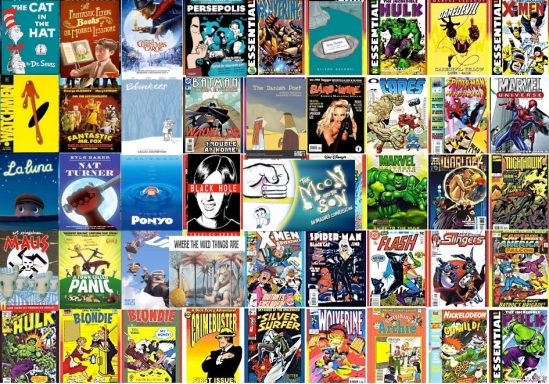
[UPDATE March 28, 2013: The book is now available; see here for more info]
We’re in the home stretch now with Transnational Perspectives on Graphic Narratives: Comics at the Crossroads (eds. Shane Denson, Christina Meyer, and Daniel Stein). The manuscript is almost through the production phase at Bloomsbury, and everything is set for the book to appear on time in March 2013. A description can be found on the publisher’s website (here), and the book is already up on amazon (US site here; British site here; German site here). A more affordable e-book version is in preparation, and a paperback is planned as well (contingent upon sales of the hardcover — so please ask your library to purchase a copy)!
Here is the final Table of Contents:
Foreword
John A. Lent
Introducing Transnational Perspectives on Graphic Narratives: Comics at the Crossroads
Shane Denson, Christina Meyer, and Daniel Stein
Part I: Politics and Poetics
1 Not Just a Theme: Transnationalism and Form in Visual Narratives of US Slavery
Michael A. Chaney
2 Transnational Identity as Shape-Shifting: Metaphor and Cultural Resonance in Gene Luen Yang’s American Born Chinese
Elisabeth El Refaie
3 Cosmopolitan Suspicion: Comics Journalism and Graphic Silence
Georgiana Banita
4 Staging Cosmopolitanism: The Transnational Encounter in Joe Sacco’s Footnotes in Gaza
Aryn Bartley
5 “Trying to Recapture the Front”: A Transnational Perspective on Hawaii in R. Kikuo Johnson’s Night Fisher
Iris-Aya Laemmerhirt
6 Folding Nations, Cutting Borders: Transnationalism in the Comics of Warren Craghead III
Daniel Wüllner
Part II: Transnational and Transcultural Superheroes
7 Batman Goes Transnational: The Global Appropriation and Distribution of an American Hero
Katharina Bieloch and Sharif Bitar
8 Spider-Man India: Comic Books and the Translating/Transcreating of American Cultural Narrative
Shilpa Davé
9 Of Transcreations and Transpacific Adaptations: Investigating Manga Versions of Spider-Man
Daniel Stein
10 Warren Ellis: Performing the Transnational Author in the American Comics Mainstream
Jochen Ecke
11 “Truth, Justice, and the Islamic Way”: Conceiving the Cosmopolitan Muslim Superhero in The 99
Stefan Meier
Part III: Translations, Transformations, Migrations
12 Lost in Translation: Narratives of Transcultural Displacement in the Wordless Graphic Novel
Florian Groß
13 Hard-Boiled Silhouettes: Transnational Remediation and the Art of Omission in Frank Miller’s Sin City
Frank Mehring
14 The “Big Picture” as a Multitude of Fragments: Jason Lutes’s Depiction of Weimar Republic Berlin
Lukas Etter
15 “Scott Pilgrim Gets It Together”: The Cultural Crossovers of Bryan Lee O’Malley
Mark Berninger
16 A Disappointing Crossing: The North American Reception of Asterix and Tintin
Jean-Paul Gabilliet
Afterword
Framing, Unframing, Reframing: Retconning the Transnational Work of Comics
Shane Denson









